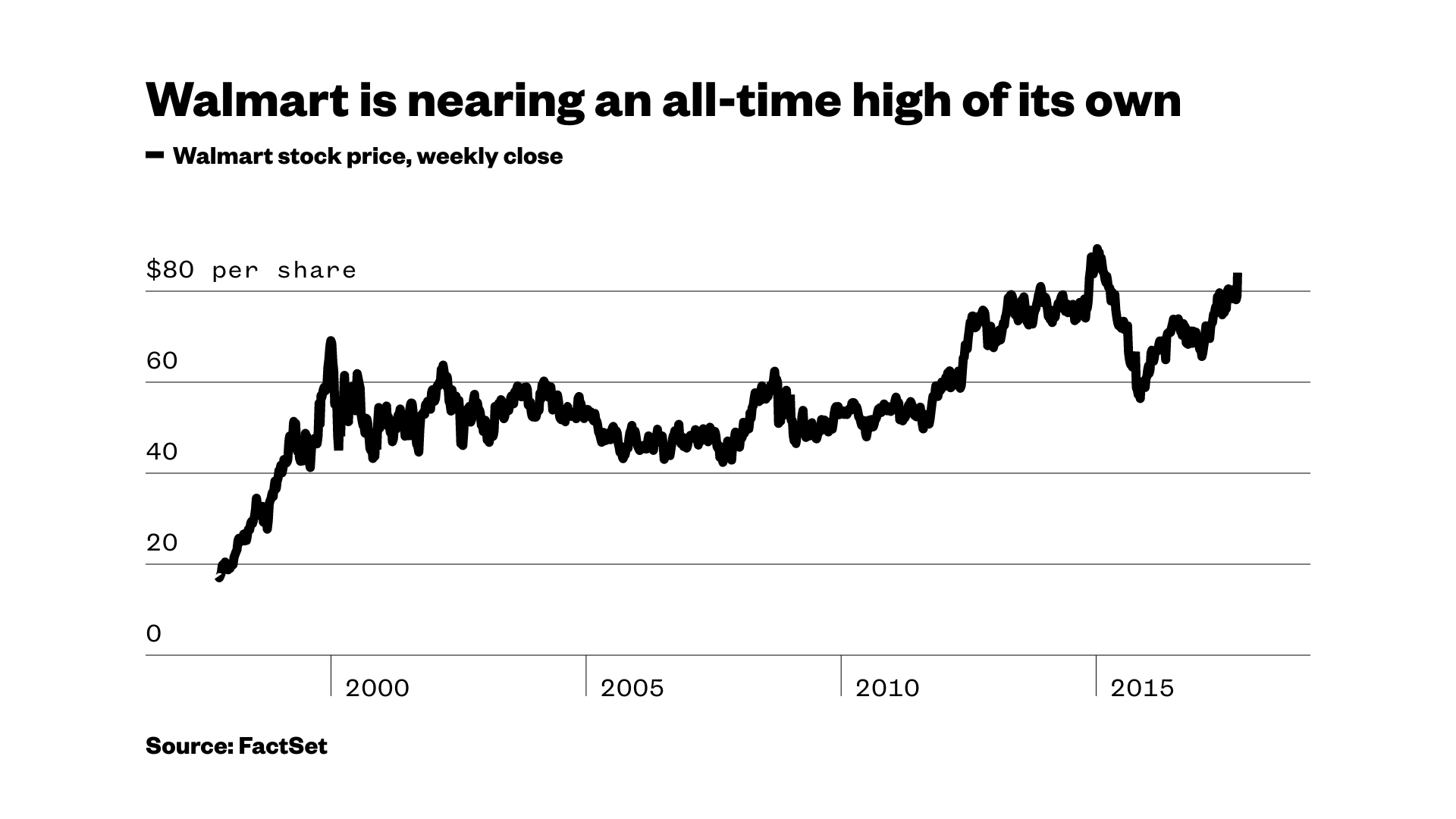Walmart won’t go down easy in the retail industry’s growing e-commerce war.
That was the Arkansas-based giant’s message Tuesday as it announced an upbeat forecast for its business, including expected growth of 40 percent in online sales in the upcoming fiscal year. The chain also said it will open 1,000 new online grocery locations — a clear response to rival Amazon’s blockbuster acquisition of Whole Foods over the summer.
Videos by VICE
Investors hailed the news, pushing Walmart shares nearly 5 percent higher in recent trading in New York. The rally pushed Walmart’s stock to $84.68 per share as of mid-afternoon, within reach of its its all-time intraday high of $90.97 set in early 2015.

The gains served as a reminder that, for all the fanfare Amazon has received in its own dizzying run to new records, Walmart remains a formidable opponent. It does still face an uphill battle in some respects, however.
Consider:
- Although Walmart has invested heavily in e-commerce recently, its fate is still heavily tied to its legacy brick-and-mortar stores. Hence Walmart’s forecast on Tuesday of a companywide sales increase of just 3 percent for the upcoming fiscal year, despite the expected contribution of 40 percent growth online.
- Online sales is still a relatively small portion of overall U.S. consumer spending, but it’s growing rapidly. Online spending was about 8.2 percent of overall activity in the second quarter. That share has doubled in less than a decade, according to Commerce Department data.
- Amazon’s market capitalization, now over $470 billion, is almost double Walmart’s, which stands around $250 billion. That gives Amazon much greater leeway to make acquisitions like the $13.7 billion Whole Foods deal to grow itself.
Amazon has historically kept its profit margins low by reinvesting cash flow back into its business, including research and development of new technology. Implicitly, it’s also thus conditioned Wall Street to accept the lower margins. By comparison, Walmart’s management is saddled with more conventional expectations from investors, which include profits.




